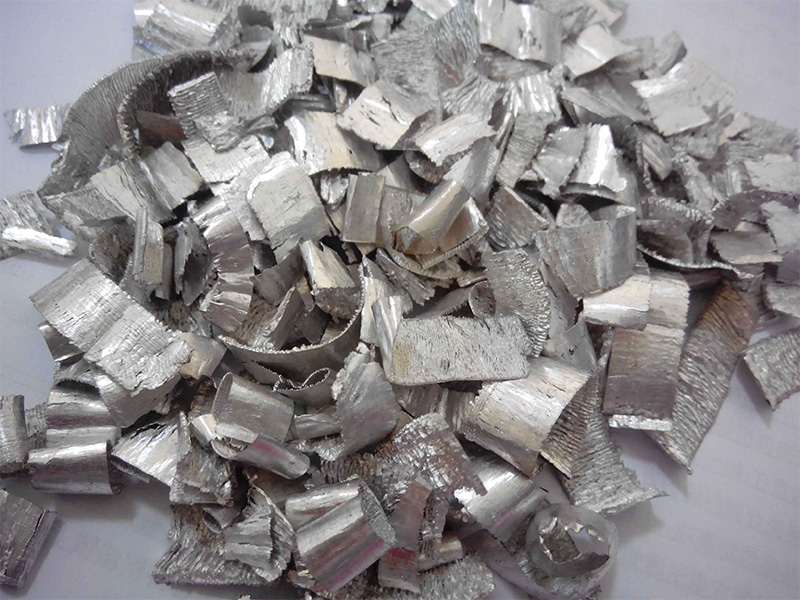


The simple answer is that ferrous metals contain iron, while nonferrous metals do not. The deeper answer is that ferrous metals and non-ferrous metals have their own unique characteristics. These attributes determine which application they are most suitable for.
Since the beginning of human civilization, people have been using non-ferrous metals. The discovery of copper in 5000 BC marked the end of the stone age and the beginning of the bronze age. Later, he invented bronze, an alloy of copper and tin, which opened the bronze age.
The use of ferrous metals began around 1200 BC, when iron production began to become common. This opened the iron age.
Some common ferrous metals include engineering steel, carbon steel, cast iron, and wrought iron. These metals are recognized for their tensile strength and durability. Carbon steel – also known as structural steel – is the main material in the construction industry and is used for the tallest skyscrapers and longest bridges. Ferrous metals are also used in Marine Containers, industrial pipelines, automobiles, railway tracks and many commercial and household tools.
Ferrous metals have high carbon content and are easy to rust when exposed to humid environment. There are two exceptions to this rule: wrought iron is resistant to rust because of its purity and stainless steel is protected from the presence of rusty chromium.
Most ferrous metals are magnetic, which makes them very useful in motor and electrical applications. The refrigerator door is made of black metal. You can nail the shopping list on it with a magnet.
Steel is made by adding iron to carbon to harden it. With the introduction of other elements such as chromium and nickel, engineering steels become harder. Steel is made by heating and melting iron ore in a furnace. Take out the steel can from the furnace and pour it into the mold to form the reinforcement. Steel is widely used in construction and manufacturing.

Compared with other types of steel, carbon steel has a higher carbon content, which makes it extremely hard. It is usually used to make machine tools, drill bits, blades, taps and springs. It keeps a sharp edge.
Chromium, nickel, titanium and other elements are added to engineering steel to give greater strength and durability without increasing weight. Stainless steel is an important engineering steel made of chromium. Engineering steel is used for construction, machine tools and electrical components.
Cast iron is an alloy made from iron, carbon, and silicon. Cast iron is brittle and hard and resistant to wear. It’s used in water pipes, machine tools, automobile engines and stoves.
Wrought iron is an alloy with very low carbon content, almost pure iron. Some slag is added in the production process, so that the wrought iron has good corrosion and oxidation resistance, but the hardness and fatigue strength are low. Wrought iron is used for fences and railings, farm implements, nails, barbed wire, chains and various ornaments.
Non ferrous metals include aluminum, copper, lead, zinc and tin, as well as precious metals such as gold and silver. Their main advantage over iron is their ductility. They also contain no iron, which makes them more resistant to rust and corrosion, and make them ideal materials for drainage ditches, liquid pipelines, roofs and outdoor signs. Finally, they are nonmagnetic, which is important for many electronic and wiring applications.
Aluminum is light, soft and low strength. Aluminum is easy to cast, forge, process and weld. Not suitable for high temperature environment. Because aluminum is light, it is a good choice for making airplanes and canned food. Aluminum is also used in castings, pistons, railways, automobiles and kitchen utensils.

Copper is red, with high ductility and ductility, and high conductivity to electricity and heat. Copper is mainly used in the electrical industry in the form of wires and other conductors. It is also used for sheet roofs, cartridge cases, regulations and bearings. Copper is also used to make brass, an alloy of copper and zinc.
Lead is a soft, heavy, ductile metal with a low melting point and low tensile strength. It can withstand the corrosion of water and many acids. Lead is widely used in power cables, batteries, construction and welding.
Zinc is a low to medium strength metal with a very low melting point. It is easy to process, but may need to be heated to avoid crystal cleavage. Zinc is most widely used for galvanizing, that is, the process of applying a protective zinc layer to iron or steel to prevent rust.
Tin is very soft, ductile and has low tensile strength. It is often used to coat steel to prevent corrosion. Tinplate is used to make tin cans for food. In the late 19th century, tin foil was widely used to package food, but it was basically replaced by aluminum foil. Tin can also be alloyed with copper to produce tin brass and bronze.

For Further Details,Please Feel Free To Contact Us: